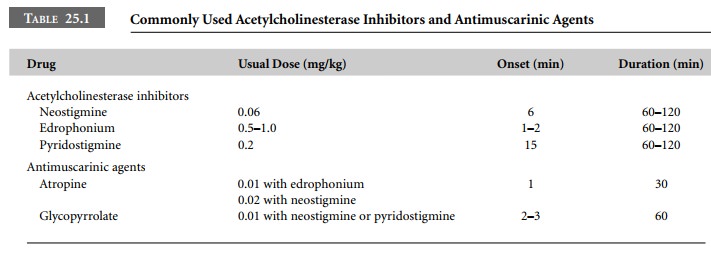Chapter: Clinical Cases in Anesthesia : Antagonism of Nondepolarizing Neuromuscular Blockade
List the clinically relevant acetylcholinesterase inhibitors
List the
clinically relevant acetylcholinesterase inhibitors.
The clinically relevant acetylcholinesterase
inhibitors include neostigmine, pyridostigmine, and edrophonium (Table 25.1).
They are all quaternary amines that do not cross the blood–brain barrier.
Physostigmine, a tertiary amine, has profound central effects and, for this
reason, is not used to antagonize neuromuscular blockade.

The active portion of acetylcholinesterase
includes an anionic and an esteratic subsite. The anionic subsite interacts
electrostatically with the quaternary nitrogen of either choline or the
acetylcholinesterase inhibitors, while the esteratic subsite interacts with
edrophonium by hydro-gen bonding and with neostigmine by covalent bonding. The
electrostatic and hydrogen bonds formed by edropho-nium are rapidly reversible,
while the covalent bond of neostigmine requires more time (a half-life of 30
minutes) to break, resulting in hydrolysis of the neostigmine molecule into two
fragments. Conversely, edrophonium’s interaction with acetylcholinesterase
yields an intact edrophonium molecule, which is subsequently cleared by the
kidney.
Related Topics